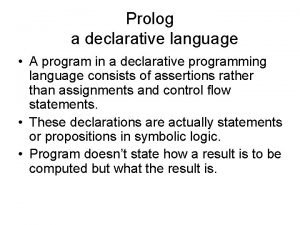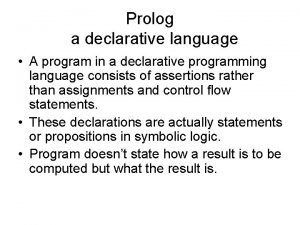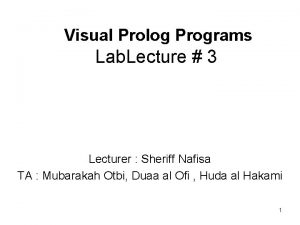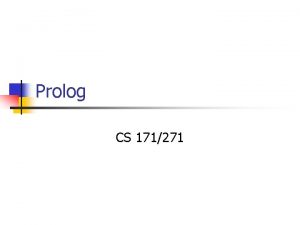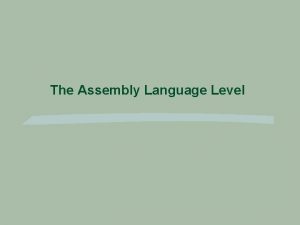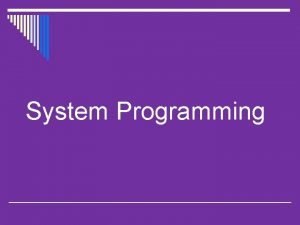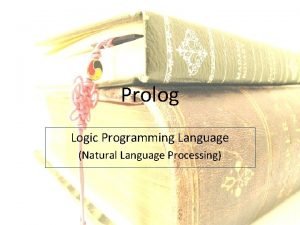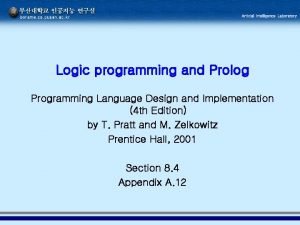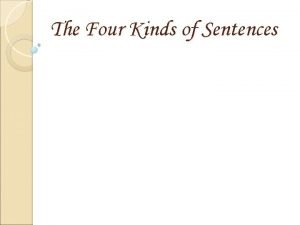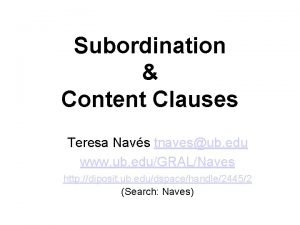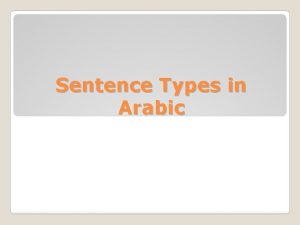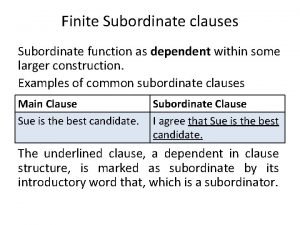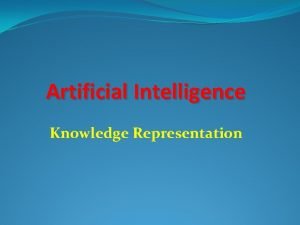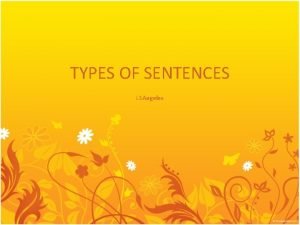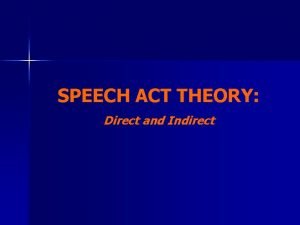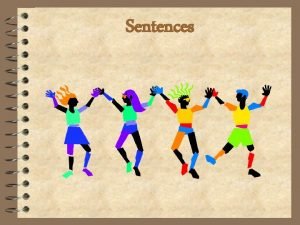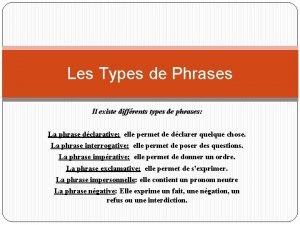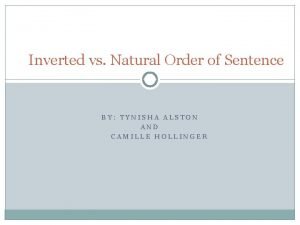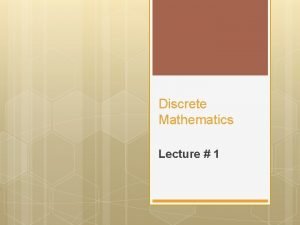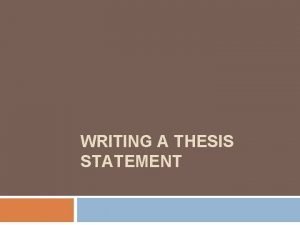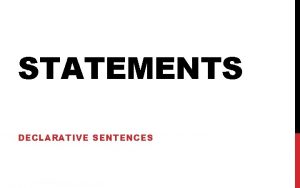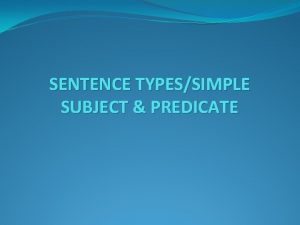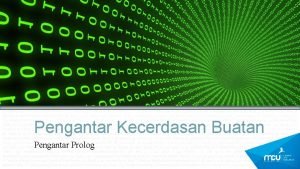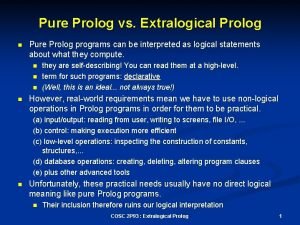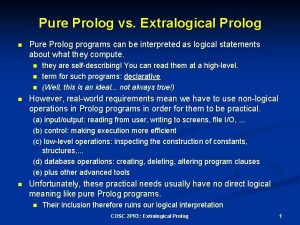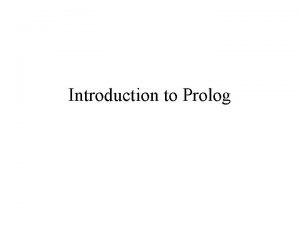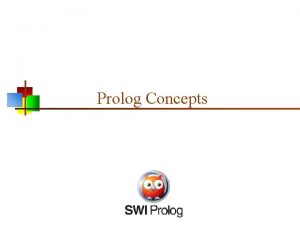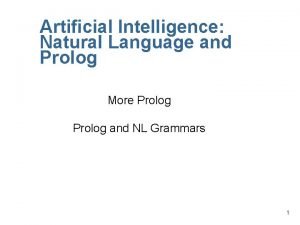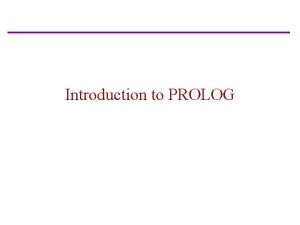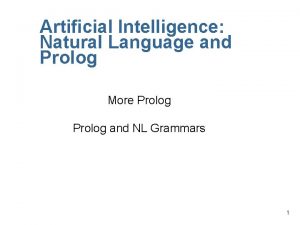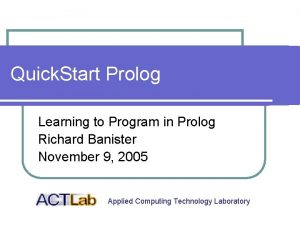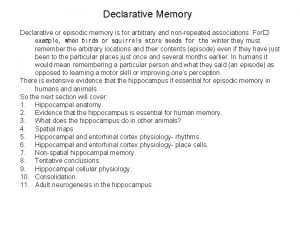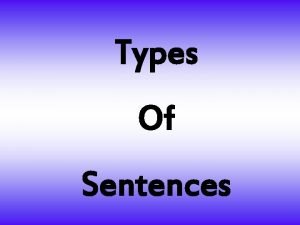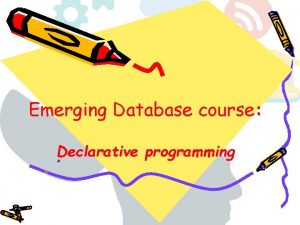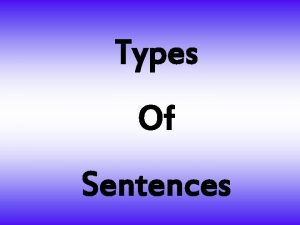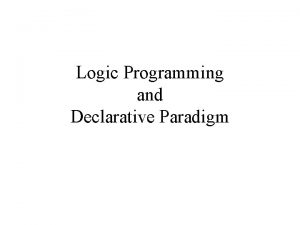Prolog a declarative language A program in a




















![List Example Database: rarebird([condor, whooping_crane, dusky_seaside_sparrow]). Queries: rarebird(condor). rarebird(What). List Example Database: rarebird([condor, whooping_crane, dusky_seaside_sparrow]). Queries: rarebird(condor). rarebird(What).](https://slidetodoc.com/presentation_image/294efb81d7ad1c09e6a39971f980628b/image-21.jpg)
![List Example - continued Database: rarebird([condor, whooping_crane, dusky_seaside_sparrow]). noteworthy(Bird) : - rarebird([Bird, __]). noteworthy(Bird) List Example - continued Database: rarebird([condor, whooping_crane, dusky_seaside_sparrow]). noteworthy(Bird) : - rarebird([Bird, __]). noteworthy(Bird)](https://slidetodoc.com/presentation_image/294efb81d7ad1c09e6a39971f980628b/image-22.jpg)
![List Example - continued Database: rarebird([condor, whooping_crane, dusky_seaside_sparrow]). noteworthy(Bird) : - rarebird([Bird, __]). noteworthy(Bird) List Example - continued Database: rarebird([condor, whooping_crane, dusky_seaside_sparrow]). noteworthy(Bird) : - rarebird([Bird, __]). noteworthy(Bird)](https://slidetodoc.com/presentation_image/294efb81d7ad1c09e6a39971f980628b/image-23.jpg)
![Head | Tail examples • Database rarebird([condor, whooping_crane, dusky_seaside_sparrow]). • Query rarebird([H | T]). Head | Tail examples • Database rarebird([condor, whooping_crane, dusky_seaside_sparrow]). • Query rarebird([H | T]).](https://slidetodoc.com/presentation_image/294efb81d7ad1c09e6a39971f980628b/image-24.jpg)
![P 638. pro append ([], List). append([Head | List_1], List_2, [Head | List_3]) : P 638. pro append ([], List). append([Head | List_1], List_2, [Head | List_3]) :](https://slidetodoc.com/presentation_image/294efb81d7ad1c09e6a39971f980628b/image-25.jpg)
![P 6382. pro list_op_2( [], []). list_op_2( [Head | Tail], List) : list_op_2 (Tail, P 6382. pro list_op_2( [], []). list_op_2( [Head | Tail], List) : list_op_2 (Tail,](https://slidetodoc.com/presentation_image/294efb81d7ad1c09e6a39971f980628b/image-26.jpg)
![P 639. pro member (Element, [Element | _ ] ). member (Element, [_ | P 639. pro member (Element, [Element | _ ] ). member (Element, [_ |](https://slidetodoc.com/presentation_image/294efb81d7ad1c09e6a39971f980628b/image-27.jpg)




- Slides: 31

Prolog a declarative language • A program in a declarative programming language consists of assertions rather than assignments and control flow statements. • These declarations are actually statements or propositions in symbolic logic. • Program doesn’t state how a result is to be computed but what the result is.

Prolog program composition • Collections of statements • Kinds of statements – Facts – Rules • Statements are constructed from terms – A term is a constant, a variable, or a structure

Prolog program elements • Constants are – Atoms or integers • Atoms are – Symbolic values of Prolog – String of letters, digits, and underscores that begins with a lowercase letter OR – String of any printable ASCII characters delimited by apostrophes

Prolog program elements • Variables are – any string of letters, digits, and underscores that begins with an upper case letter – not bound to types by declarations – bound to values and types by instantiations • Instantiation occurs only in resolution process – not like variables in imperative languages

Prolog program elements • Structures – have the general form functor(parameter_list) – functor is any atom & it identifies the structure – parameter_list can be any list of atoms variables or other structures. – are the way to specify facts in Prolog – can be thought of as objects – are relations – are predicates

Prolog facts • Facts – state relations explicitly • man(paul). • rich(joan). – SWI-Prolog doesn’t like spaces between the name of the relation and the left parenthesis. PDProlog doesn’t care. – are propositions that are assumed to be true – are the statements from which new information can be inferred – are headless Horn clauses – have no intrinsic semantics

Prolog rules • Rules – – – are headed Horn clauses right side is the antecedent or if part left side is the consequent or then part consequent must be a single term, antecedent may be either a single term or a conjunction • • • rich(joan) : - has_money(joan). rich(joan) : - has_health(joan), has_job(joan). Conjunctions contain multiple terms separated by logical and : - is read as if , means and

Example parent(X, Y) : - mother(X, Y). parent(X, Y) : - father(X, Y). grandparent(X, Z) : - parent(X, Y), parent(Y, Z). sibling(X, Y) : mother(M, X), mother(M, Y), father (F, X), father(F, Y).

Prolog as a theorem proving model • proposition – is the form of theorem that we want to prove or disprove – is called a goal – is called a query – syntactic form is that of a headless Horn clause • man(fred). – returns yes OR returns no – yes means that system proved goal was true under given database of facts and relationships – no means either the goal was proved false OR system was simply unable to prove it.

Sidebar 1 • The process of determining useful values for variables is called unification. • The temporary assigning of values to variables to allow unification is called instantiation. • Resolution is an inference rule that allows inferred propositions to be computed from given propositions.

Sidebar 2 • Horn clauses come in two forms – Single atomic proposition on the left side OR – Empty left side – Left side is called the head – Horn clauses with left sides are called headed Horn clauses – Horn clauses with empty left sides are called headless Horn clauses.

Example Database: p(X) : - q(X), not (r(X)). r(X) : - w(X), not (s(X)). q(a). q(b). q(c). s(a). w(a). w(b). Queries p(a). p(b). p(c).

Example Database: bachelor(P) : - male(P), not (married(P)). male(henry). male(tom). married(tom). Queries: bachelor(henry). bachelor(tom). bachelor(Who). married(Who). not(married(Who)).

Prolog operators • relational operators = = >= <= > < • Assignment operator is is peculiar - not like ordinary assignment operator

Behavior of Prolog “is” • takes an arithmetic expression as its right operand • takes a variable as its left operand • all variables in the arithmetic expression must already be instantiated • left-side variable cannot be previously instantiated • Discussion Examples: A is B / 17 + C X is X + 1

Prolog Arithmetic Example • • • speed(ford, 100). speed(chevy, 105). speed(dodge, 95). speed(volvo, 80). time(ford, 20). time(chevy, 21). time(dodge, 24). time(volvo, 24). distance (X, Y) : - speed(X, Speed), time(X, Time), Y is Speed * Time.

Short Prolog backtracking example /* facts */ likes(jake, chocolate). likes(jake, apricots). likes(darcie, licorice). likes(darcie, apricots). /* query or goal */ likes(jake, What), likes(darcie, What).

Miscellanea • parameters , arguments • arity – number of parameters/arguments in a parameter list • anonymous variable – used when don’t care mother (X, _). likes (_, What). • logical operators , means and ; means or + means not in SWI - Prolog not means not in PD Prolog

Miscellania • retract( ). - can be used to delete a single fact or relation • forget( ). – can be used to remove a file you have consulted • halt. – exits gracefully from SWI-Prolog • differences between – listing. – dir p. – dir.

Prolog lists • Lists – are written in square brackets with commas between the list’s element [condor, whooping_crane, dusky_seaside_sparrow] – can be used as the argument of a relation rarebird([condor, whooping_crane, dusky_seaside_sparrow]). – – can be queried can take advantage of anonymous variables have a head and a tail can be processed recursively
![List Example Database rarebirdcondor whoopingcrane duskyseasidesparrow Queries rarebirdcondor rarebirdWhat List Example Database: rarebird([condor, whooping_crane, dusky_seaside_sparrow]). Queries: rarebird(condor). rarebird(What).](https://slidetodoc.com/presentation_image/294efb81d7ad1c09e6a39971f980628b/image-21.jpg)
List Example Database: rarebird([condor, whooping_crane, dusky_seaside_sparrow]). Queries: rarebird(condor). rarebird(What).
![List Example continued Database rarebirdcondor whoopingcrane duskyseasidesparrow noteworthyBird rarebirdBird noteworthyBird List Example - continued Database: rarebird([condor, whooping_crane, dusky_seaside_sparrow]). noteworthy(Bird) : - rarebird([Bird, __]). noteworthy(Bird)](https://slidetodoc.com/presentation_image/294efb81d7ad1c09e6a39971f980628b/image-22.jpg)
List Example - continued Database: rarebird([condor, whooping_crane, dusky_seaside_sparrow]). noteworthy(Bird) : - rarebird([Bird, __]). noteworthy(Bird) : - rarebird([__, Bird]). Queries: rarebird(condor). rarebird(What). noteworthy(condor). noteworthy(Who).
![List Example continued Database rarebirdcondor whoopingcrane duskyseasidesparrow noteworthyBird rarebirdBird noteworthyBird List Example - continued Database: rarebird([condor, whooping_crane, dusky_seaside_sparrow]). noteworthy(Bird) : - rarebird([Bird, __]). noteworthy(Bird)](https://slidetodoc.com/presentation_image/294efb81d7ad1c09e6a39971f980628b/image-23.jpg)
List Example - continued Database: rarebird([condor, whooping_crane, dusky_seaside_sparrow]). noteworthy(Bird) : - rarebird([Bird, __]). noteworthy(Bird) : - rarebird([__, Bird]). rarebird(Bird) : - noteworthy(Bird). Queries: rarebird(condor). rarebird(What). noteworthy(condor). noteworthy(Who).
![Head Tail examples Database rarebirdcondor whoopingcrane duskyseasidesparrow Query rarebirdH T Head | Tail examples • Database rarebird([condor, whooping_crane, dusky_seaside_sparrow]). • Query rarebird([H | T]).](https://slidetodoc.com/presentation_image/294efb81d7ad1c09e6a39971f980628b/image-24.jpg)
Head | Tail examples • Database rarebird([condor, whooping_crane, dusky_seaside_sparrow]). • Query rarebird([H | T]).
![P 638 pro append List appendHead List1 List2 Head List3 P 638. pro append ([], List). append([Head | List_1], List_2, [Head | List_3]) :](https://slidetodoc.com/presentation_image/294efb81d7ad1c09e6a39971f980628b/image-25.jpg)
P 638. pro append ([], List). append([Head | List_1], List_2, [Head | List_3]) : append (List_1, List_2, List_3).
![P 6382 pro listop2 listop2 Head Tail List listop2 Tail P 6382. pro list_op_2( [], []). list_op_2( [Head | Tail], List) : list_op_2 (Tail,](https://slidetodoc.com/presentation_image/294efb81d7ad1c09e6a39971f980628b/image-26.jpg)
P 6382. pro list_op_2( [], []). list_op_2( [Head | Tail], List) : list_op_2 (Tail, Result), append (Result, [Head], List).
![P 639 pro member Element Element member Element P 639. pro member (Element, [Element | _ ] ). member (Element, [_ |](https://slidetodoc.com/presentation_image/294efb81d7ad1c09e6a39971f980628b/image-27.jpg)
P 639. pro member (Element, [Element | _ ] ). member (Element, [_ | List]) : - member (Element, List


Matching a goal to a fact • Start with facts and rules and attempt to find a sequence of matches that lead to the goal. – Called bottom-up resolution – Also called forward chaining • Start with the goal and attempt to find a sequence of matching propositions that lead to a set of original facts in the database. – Called top-down resolution – Also called backward chaining • Prolog implementations use backward chaining.

How is solution found? • A depth-first search finds a complete sequence of proposition - a proof- for the first subgoal before working on the others. • A breadth-first search works on all subgoals of a given goal in parallel. • Prolog’s designers chose depth-first approach – uses fewer resources

Backtracking • When a goal with multiple subgoals is being processed and the system fails to show the truth of one of the subgoals, the system abandons the subgoal it could not prove. • It then reconsiders the previous subgoal, if there is one, and attempts to find an alternative solution to it. • A new solution is found by beginning the search where the previous search for that subgoal stopped. • Multiple solutions to a subgoal result from different instantiations of its variables.
 Prolog declarative
Prolog declarative Prolog declarative
Prolog declarative Visual prolog vs swi-prolog
Visual prolog vs swi-prolog Download prolog
Download prolog Imperative statement in system programming
Imperative statement in system programming What is assembly language example
What is assembly language example Declarative statement in assembly language
Declarative statement in assembly language History of prolog
History of prolog Logic programming language
Logic programming language Declarative interrogative imperative exclamatory examples
Declarative interrogative imperative exclamatory examples Declarative sentence
Declarative sentence Declarative content clause
Declarative content clause Define long term memory
Define long term memory Simple sentence in arabic
Simple sentence in arabic Structure of interrogative sentence
Structure of interrogative sentence Declarative ui programming
Declarative ui programming Main clause
Main clause Imperative vs declarative sentences
Imperative vs declarative sentences Computable predicates in ai
Computable predicates in ai Declarative design pattern
Declarative design pattern 5 example of declarative sentence
5 example of declarative sentence Kind of the sentence
Kind of the sentence Sentence try
Sentence try Compare procedural semantics and declarative semantics.
Compare procedural semantics and declarative semantics. Types of knowledge
Types of knowledge La phrase déclarative
La phrase déclarative Phrase impérative exemple
Phrase impérative exemple Natural and inverted sentences examples
Natural and inverted sentences examples Declarative statement in discrete mathematics
Declarative statement in discrete mathematics What is a declarative thesis statement
What is a declarative thesis statement Old singer
Old singer Declarative sentence with subject and predicate
Declarative sentence with subject and predicate
